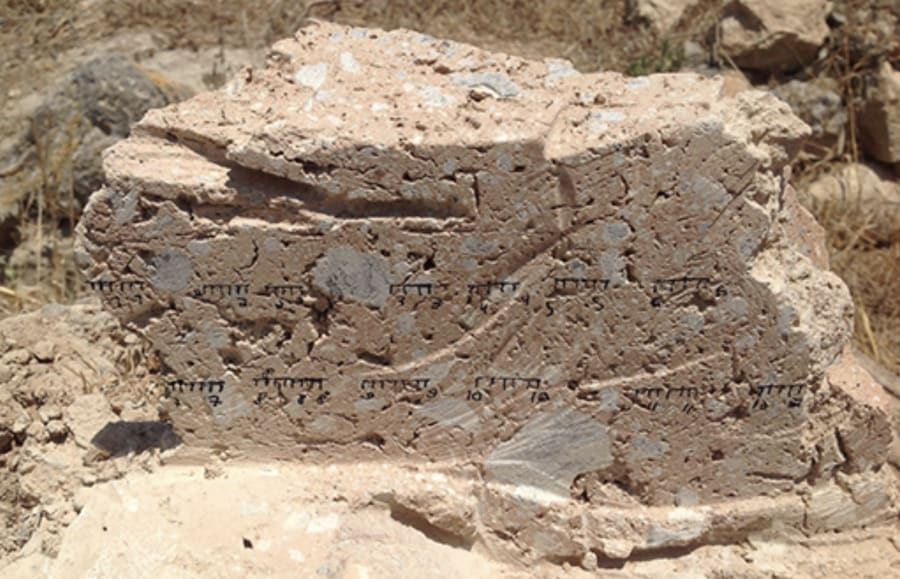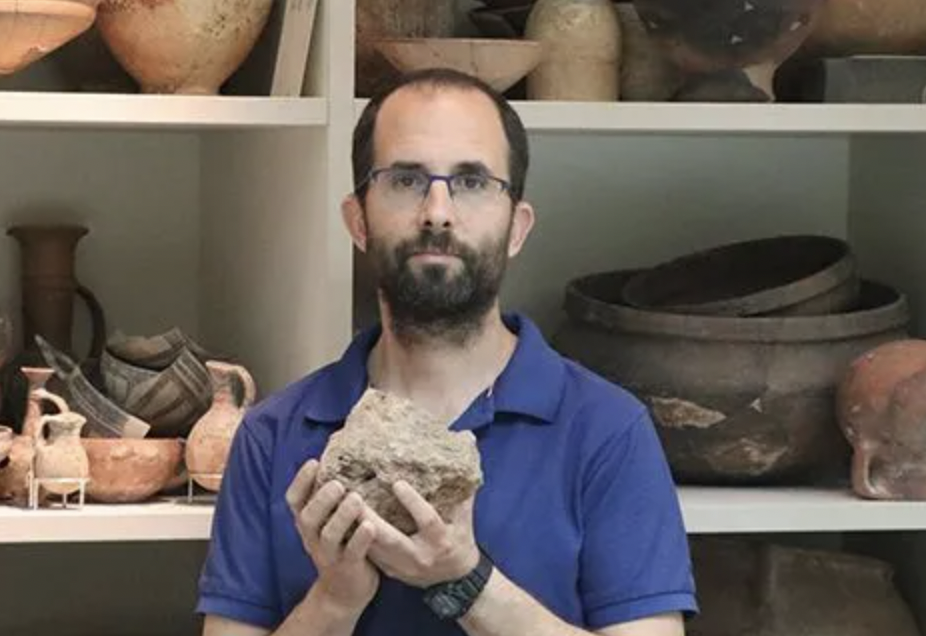Israeli researchers use earth’s magnetic field in breakthrough method to verify biblical event
Study helps determine how certain bricks were burned - in a kiln or a fire

Researchers from four Israeli universities made a breakthrough when dating certain historical events using the earth’s magnetic field and in doing so verified the timing of an event recorded in the Book of Kings.
The breakthrough by researchers from Tel Aviv University, The Hebrew University of Jerusalem, Bar-Ilan University and Ariel University, allows archaeologists to determine more precisely what firing temperatures a burnt object underwent.
The new study was used to verify the biblical description of the destruction of the Philistine city of Gath by Hazael, king of Aram, as recorded in 2 Kings 17:17.
"About this time Hazael King of Aram went up and attacked Gath and captured it. Then he turned to attack Jerusalem.” (2 Kings 12:18)
Archaeologists studying findings from Tell es-Safi (biblical Gath), were able to demonstrate that the bricks in a wall from the city were burned in a conflagration during the destruction of the city, and not made from kiln-fired bricks as had been previously assumed.
Dr. Yoav Vaknin from the Sonia & Marco Nadler Institute of Archaeology, the project leader, said, “During the same era dwellers of other lands, such as Mesopotamia where stone was hard to come by, would fire mud bricks in kilns to increase their strength and durability. This technique is mentioned in the story of the Tower of Babel in the Book of Genesis: 'They said one to another, Come, let us make bricks and fire them thoroughly. So they used brick for stone.' (Genesis 11:3).”

Another researcher, Prof. Lipschits explained: “Throughout the Bronze and Iron Ages the main building material in most parts of the Land of Israel was mud bricks. This cheap and readily available material was used to build walls in most buildings, sometimes on top of stone foundations. That's why it's so important to understand the technology used in making these bricks.”
“Most researchers, however, believe that this technology did not reach the Land of Israel until much later, with the Roman conquest," Dr. Vaknin added. "Until that time the inhabitants used sun-dried mud bricks. Thus, when bricks are found in an archaeological excavation, several questions must be asked: First, have the bricks been fired, and if so, were they fired in a kiln before construction or in situ, in a destructive conflagration event? Our method can provide conclusive answers.”
Bricks are made from mud, which contains millions of ferromagnetic particles. Sun-dried bricks have a random magnetic orientation. When bricks are fired, the magnetic particles align to the earth’s magnetic field. However, researchers found they could cancel that alignment by reheating the bricks in a special oven. The bricks would return to a random orientation when heated to the same temperature at which they were originally fired.
Kiln-fired bricks are heated to much higher temperatures than bricks burned in a building fire.
By using the technique, researchers discovered that the bricks from Gath were fired at a temperature consistent with a conflagration, not kiln-firing.
Professor Aren Maeir, one of the co-authors of the study from the Department of Land of Israel Studies and Archaeology at Bar-Ilan University in Ramat Gan, said, “Our findings are important for determining the intensity of the fire and the scope of destruction in Gath—the largest and most powerful city in the land at the time, and also for understanding construction practices in the region.”
The researchers published their findings in the PLOS One journal, in an article titled “Applying thermal demagnetization to archaeological materials: A tool for detecting burnt clay and estimating its firing temperature.”

The All Israel News Staff is a team of journalists in Israel.













